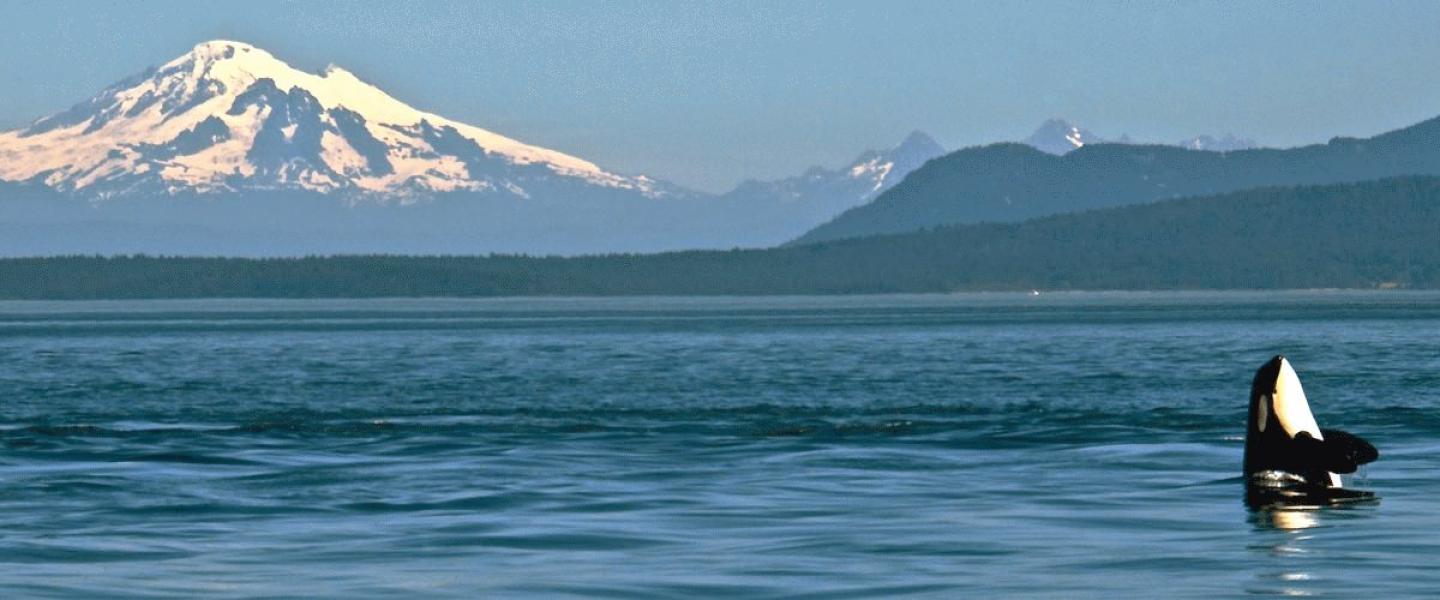
We have had an absolutely incredible season here in the San Juan Islands. Whenever naturalists or captains run into each other around town all we can do is laugh and shake our heads... the frequency of whale sightings has just been out of this world this season. October has been no different.
On Saturday we headed out of Friday Harbor with reports of Resident orcas spread out from the northern reaches of the San Juan Islands all the way to the southern end of Lopez Island. We ended up meeting up with the L54 matriline just off of Iceberg Point, and enjoyed the antics of L54 Ino, her two kiddos L108 Coho & L117 Keta, as well as the two males who travel with her L84 Nyssa and L88 Wavewalker. Both L84 and L88 are the last remaining members of their matrilines, meaning they have no remaining close family. For these orcas, who are so committed to their families, being orphaned, even as an adult, can be devastating. It's not unusual to see these orphaned adult males traveling with an associated family. After spending some time with the L54s as they fished and travelled north, we received a report of a humpback just to the southwest of our location. We stayed with the humpback for a few surfacing, before leaving to check out a GIANT bait ball and a minke whale. Bait balls are gatherings of small bait fish which attract seabirds, seals, sea lions, porpoises, and the occasional minke or humpback whale. Both humpbacks and minke whales have baleen in their mouths instead of teeth, which they use to filter small fish and shrimp, called krill, from the water. After spending some time with the bait ball we returned to the orcas for some last looks before heading for home.
On Sunday we left the harbor with reports of Transient killer whales to the north. We have two distinct populations of killer whales here in the Salish Sea, known as ecotypes. These ecotypes are not only genetically separate from one another (they don't interbreed), but they are also culturally distinct! This means that they behave very differently, eat different things and even speak different languages. Residents eat primarily salmon, while Transients are marine mammal eaters... hunting anything cute and cuddly which lives in the ocean. Around here 60% of their diet is comprised of harbor seals. We caught up with the T060 family group (T060 and her four kiddos ranging in age from fourteen to three years of age) just north of the Sidney Ferry Terminal in British Columbia. We followed them south as they hunted and made a number of kills. We were delighted as they celebrated these kills by spyhopping (sticking the front third of their bodies out of the water to have a look around), tail slapping, and porpoising (zooming as fast as they can bringing their entire bodies out of the water parallel to the surface). We enjoyed beautiful, sunny, weather and very playful whales!
Lots of people ask what the best time is to come visit the San Juans for a whale and wildlife watch... It totally depends on what you're after out here.... Orcas? Historically, it's a bit hit or miss come September or October, but this fall we have had orcas on all save for two or three trips (and even then we had humpback whales!). Some people are turned off by that fact, but in all honesty fall is my absolute favorite time out here on the water. The light is incredible, the wildlife is off the charts, and there are fewer boats out on the water. Hope to see you out there soon!
Naturalist Sarah McCullagh, M/V Sea Lion, San Juan Safaris